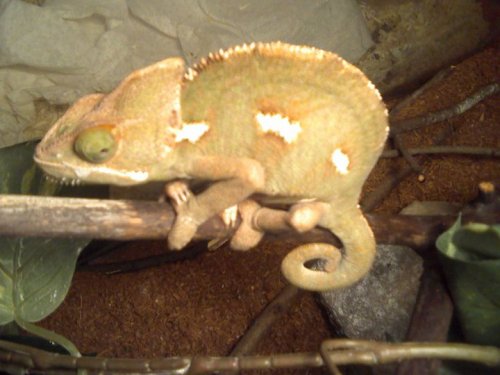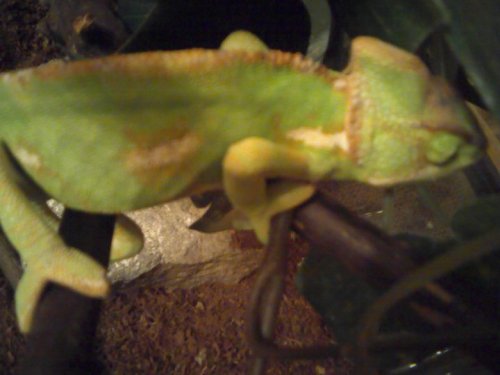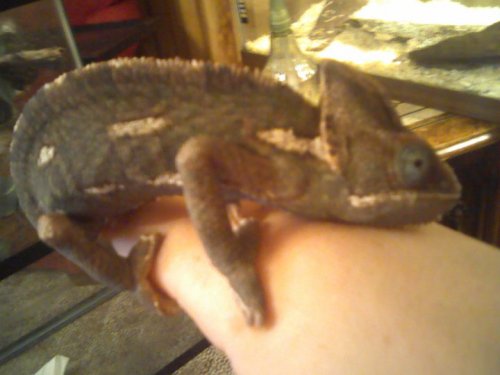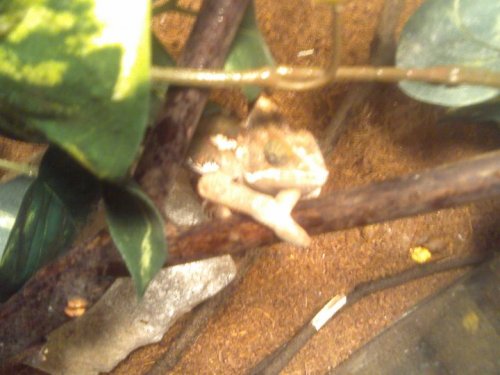ruru
New Member
So yesterday i bought my first chameleon! It is a female vieled chameleon her name is ruru. I have done all my research on chameleons and im making sure i have everything she needs. but i still have a couple questions! since i own a bearded dragon, and i know its not safe to let crickets run loose in his cage over night because they will try to nibble on him. does this also go for chameleons to? also i was wondering what the "normal" coloring is for a healthy cham? i know they change due to temp changes and mood but when i first got her she was a light green color and now that i have her in her home she seems to be staying more of a brownish color.. can anyone tell me if that is normal?







